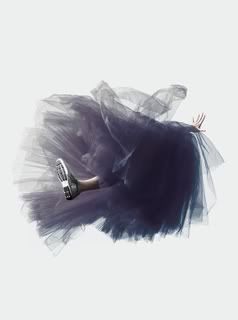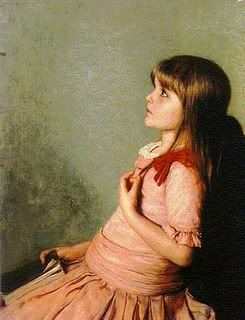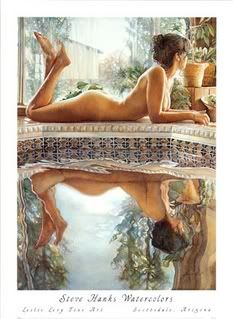
What ARE "chypre perfumes"?
What are the aesthetics of chypre fragrances?
What's the history and zeitgeist of "chypre" evolution?
In our quest for chypre perfumes we stumble upon a peculiar phenomenon: there are scarcely any true chypres getting produced in the last 25 years!! Why is that? The answer is two-fold and fascinating in its denouement.
First of all, there is the matter of ingredients getting replaced and restricted, with oakmoss being the most crucial and prominent one as mentioned before. However surely this is a very recent phenomenon that only lately has seriously affected perfumers and houses into producing fragrances that do not make use of this elusive, wonderfully sensual ingredient. For example it was only at the beginning of the year that Mitsouko begun its journey into its latest reformulation, the one that lowers the oakmoss magnificence into the accountant-minded IFRA guidelines. Perhaps it's just as well that the process is going slowly in those instances so one can stockpile a favourite version/vintage while they still can. Labdanum is also slowly being replaced by other ingredients. Miss Dior, this legendary New Look debutante has had a makeover by Queer Eye for the Straight Guy. The effect is not quite as endearingly old-fashioned as it used to be. The sister fragrance (or should I say evil step-sister?) Miss Dior Cherie is the new direction in which the pendulum swings.
Nevertheless there must have been something else besides ingredients' embargo at play, influencing trends and production, which we will explore in another installment on the Chypre series real soon.
In the meantime, it might be interesting to note that after what seemed a total eclipse of chypres in releases of late years, there has been a new category of fragrances coming out slowly but surely that although not typical of their family they bear the illustrious label regardless.

These new entries into the galaxy of chypre have been ingeniously coined by Ayala Moriel as "pink chypres", simply because they exude a modern, young and girly air that is a novel take on the old sophistication of a classic chypre.
Michael Edwards, the man who is responsible for the "Fragrances of the World" system is classifying them under the "mossy woods" umbrella as evidenced in the Sephora directory. Oakmoss is mentioned in the introductory note, yet it is distinctly shunning the invitation in several of those listed.
But then how conclusive are fragrance families and categories anyway?
Referenced in the series "Que sais-je?" in the volume Le Parfum Jean Claude Ellena notes:
I've taken part in the perfume classification committee of the Société Française des Parfumeurs, but nowadays I wonder what its use really is. [...]In today's olfactory classifications, I believe that the most valuable information lies in the perfume's date of creation, its name, and the name of the brand that launched it on the market. The date allows us to put perfumes in an evolutionary perspective (as long as we are able to smell them), while product names and brands give us some indication of the degree of creativity involved in each company. (p. 77-78)(quote copied from Marcello on nowsmellthis)
Clearly this is a renouncement of formal classifications and perhaps a rather elitist streak, one might say, that runs into this 60 year old minimalist perfumer responsible for such masterpieces as First by Van Cleef, Declaration by Cartier, the Hermessences and the Jardin series (en Mediteranee and sur le Nil) for Hermes and numerous others. But then again Jean Claude has a family which cherises aromas in everyday life and sits down to Christmas dinner hiding little aromatic gifts under the napkins. His daughter is also a perfumer, Cecile Ellena, the co-nose of The Different Company. It goes with the territory.
With that in mind, if we choose to take his side, this new category of chypres is worth exploring even though they lack the characteristic bergamot-oakmoss accord that is typical of the classics of yesterday.
So what goes into the production of those modern chypres?
The typical bergamot top of classic chypres has long been known to be phototoxic, resulting in brown patches on the skin upon exposure to UV radiation. It has been advised ever since I can recall to avoid placing perfume in spots that would be exposed to the sun, exactly because of that. And it has been well-known and accepted for decades. Why it has become such a derisive issue now, which demands the restriction of its use in minute amounts or the clear labelling on the box, is a matter that has to do with complicated legal reasons and the fervent desire of companies to not get entantangled in judicial battles that would cost them fortunes.
Bergamot has thus been shunned for other citrusy and bright top notes that include fresh and slightly bitter grapefruit, sweet mandarin and tangerine (like in Miss Dior Cherie), homely orange in some cases, and even floral essences that marry the florancy with the high volatility and sparkle of hesperides, like neroli or even orange blossom (as is the case in Narciso which uses a synthesized orange blossom that is also apparent in this year's launches for men Dior Farhenheit 32 and Gaultier Fleur du Male).
Fruity notes such as mangosteen (Hillary Duff With Love), lichi, watermelon and passion fruit (Masaki Matsushima Masaki), strawberry (Miss Dior Cherie)and berries (Badgley Mischka) are also appearent, although this might have to do with the overuse of fruity aromas in perfumes of recent launch anyway.
Sweet gourmand touches (caramelised pop corn of Miss Dior Cherie and creme de cassis in Badgley Mischka) might also be attributed to that and not to any desire to revolutionise the chypre notion any further. Which is just as good...
Oakmoss and labdanum have been substituted by grassy, pungent vetiver ~that aromatic root from Java that is the dream of every engineer as it binds itself into substructure; and by patchouli ~that indian bush with the sweet smelling leaves that produce the most potent smell in the vegetal kingdom. The two have been the base accord of almost every new chypre to emerge since 2000 and are going steady in their triumphal marching into perfumery even in seperate capacities. They are tremendously popular notes in both feminine and masculine perfumes.
Often spicy notes, such as coriander (Emporio Armani City Glam Her), or herbal ones, such as angelica, mingle with various musks to accent the murky character of the new chypres. Producing thus oeuvres that although they bear no relation to the old-fashioned intense warmth and powder of their predecessors, they appeal to similar audiences; audiences who have been conditioned to love chypres since childhood perhaps, be it from received memories through beloved family members, or through an appreciation for the unidentifiable character of those Old World sumptuous fragrances.
In any case the future for modern chypres is looking very bright indeed!
Next installement will tackle matters of aesthetics.
Top pic sent to me by mail unaccredited, pic of Narciso bottle courtesy of Nordstrom.com
.jpg)







